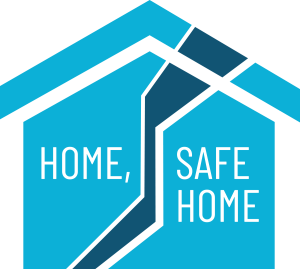Home, Safe Home: Seismic Safety & Rehabilitating Historic Homes
Home, Safe Home: Seismic Safety and Rehabilitating Historic Homes Series | June 23rd to Dec 20th, 2022
Six webinars. a team of preservation professionals. one goal. This series is FREE for the public and all webinars will be recorded.
HOME, SAFE HOME.
SEISMIC SAFETY & REHABILITATING HISTORIC HOMES
SEISMIC SAFETY & REHABILITATING HISTORIC HOMES
A program offered by the California Office of Historic Preservation (OHP) through a grant from the Federal Emergency Management Agency (FEMA). The webinars feature preservation partners from Page & Turnbull, Structural Focus, and Melvyn Green & Associates in collaboration with the California Preservation Foundation.
Californians know that “The Big One” is always around the corner. If you own a historic home, every small shake may make you think, “Is this place safe?” These webinars are designed for homeowners, to be easily understandable and applicable when it comes to the seismic retrofit of your home.
Together with OHP, a team of architects, engineers, and architectural historians with preservation expertise and a passion for historic homes to guide you on how to upgrade and retrofit your home to protect from a future earthquake - without compromising its historic character.
Case studies explain how it is done and identify programs and incentives useful to planning your own rehabilitation or retrofit project, including the Earthquake Brace + Bolt Program and the California Historic Building Code. That gingerbread trim on your Victorian or plate glass windows in your mid-century house will thank you.


Workshop 1: What Makes My Home Historic? (recorded)
Recording
Downloadable Resources
Information
Preservation 101 – understanding your historic home. This workshop will provide a primer for understanding the significance and ‘historic integrity’ of historic homes, the difference between condition and integrity, and character-defining spaces and architectural features. Case study examples and interactive activities will be integrated into the workshop. In addition, supplemental technical and educational reference materials will be provided to attendees, including a list of online resources and a glossary of terms.
At the end of this workshop, you will be able to:
- Recognize different types of historic properties.
- Summarize and describe your home’s significance.
- Define ‘historic integrity’ and differentiate from ‘physical condition.’
- Assess and identify the spatial relationships, spaces, features, and materials that make your home historic.
Workshop Speakers
This workshop is led by architects and cultural resources planners from Page & Turnbull, an architecture and planning firm imagining change in historic environments through design, research, and technology.
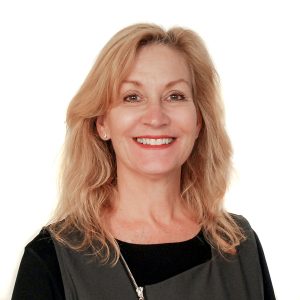 Ruth Todd, FAIA, LEED AP, AICP, Principal, Page & Turnbull
Ruth Todd, FAIA, LEED AP, AICP, Principal, Page & Turnbull
As the leader of the Cultural Resources Studio at Page & Turnbull, Ruth Todd promotes a comprehensive vision of how historic structures can activate neighborhoods and enrich daily experience. A national expert, Ruth has led cultural and historic master plans across the United States that have catalyzed economic development and forged stronger communities. Her preservation plan for Charleston, South Carolina won broad acclaim as an exemplar and a National Preservation Honor Award for preserving one of the world’s most beautiful and historic cities during a period of significant growth pressures. A fellow of the American Institute of Architects and an emerita trustee of the California Preservation Foundation, Ruth currently serves on the boards of the Architectural Foundation of San Francisco and the Fort Mason Center for Arts & Culture. She is a recipient of the American Architectural Foundation’s prestigious Richard Morris Hunt Fellowship. Prior to joining Page & Turnbull, Ruth was associate university architect at Stanford University.
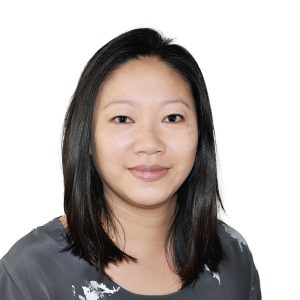 Flora Chou, Associate Principal, Page & Turnbull
Flora Chou, Associate Principal, Page & Turnbull
As a Cultural Resources Planner, Flora has extensive experience in researching and evaluating sites for their historic eligibility, applying the Secretary of the Interior’s Standards for the Treatment of Historic Properties (SOI Standards) to project reviews, and complying with CEQA and other regulatory requirements for historic resources. Her expertise with historic sites ranges from mid-19th century adobe structures to mid-20th century modern buildings. She works to integrate historic preservation with urban planning, sustainable design, and community development while incorporating diverse cultural resources more fully into the field. Prior to joining Page & Turnbull, Flora was a Preservation Advocate for the Los Angeles Conservancy. She has served on the national board of Docomomo US, a nonprofit organization dedicated to the documentation and conservation of buildings, sites and neighborhoods of the Modern Movement, since 2013.
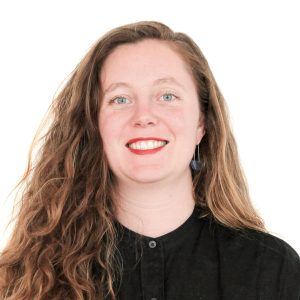 Hannah Simonson, Associate, Page & Turnbull
Hannah Simonson, Associate, Page & Turnbull
Hannah Simonson is a Cultural Resources Planner at Page & Turnbull. Hannah has experience working on numerous historic resource evaluations, project impact analyses, historic resource surveys, historic context statements, and illustrated design guidelines. Hannah also has experience in material conditions assessment fieldwork. While her personal research interests are in Modernist architecture and landscapes and recent past resources, she brings an enthusiasm for preservation and a rigorous research ethic to projects of all types. Hannah is the president of the Northern California chapter of Docomomo US, a nonprofit organization dedicated to the documentation and conservation of buildings, sites and neighborhoods of the Modern Movement.
Workshop 2: Is 'Compatible' 'Matchy-Matchy'? (recorded)
Recording
Downloadable Resources
Information
What are the Secretary of the Interior’s Standards, and what do they have to do with my home? This workshop will introduce guidance for how to develop seismic retrofit projects that are sensitive to the character of historic buildings. This includes a review of the Secretary of the Interior’s Standards for the Treatment of Historic Properties. The workshop will also discuss important preservation considerations when updating or retrofitting a home. Case study examples and interactive activities will be integrated into the workshop. In addition, supplemental technical and educational reference materials will be provided to attendees, including a list of online resources and a glossary of terms.
At the end of this workshop, you will be able to:
- Define and differentiate between the Secretary of the Interior’s Standards four approaches to treating historic properties - Preservation, Rehabilitation, Restoration, and Reconstruction.
- Identify resources that will help you to understand and apply the Standards to your project.
- Analyze how the Standards for Rehabilitation might apply to common repairs and alterations.
- Predict how your project may impact historic features and characteristics.
Workshop Speakers
This workshop is led by architects and cultural resources planners from Page & Turnbull, an architecture and planning firm imagining change in historic environments through design, research, and technology.
 Ruth Todd, FAIA, LEED AP, AICP, Principal, Page & Turnbull
Ruth Todd, FAIA, LEED AP, AICP, Principal, Page & Turnbull
As the leader of the Cultural Resources Studio at Page & Turnbull, Ruth Todd promotes a comprehensive vision of how historic structures can activate neighborhoods and enrich daily experience. A national expert, Ruth has led cultural and historic master plans across the United States that have catalyzed economic development and forged stronger communities. Her preservation plan for Charleston, South Carolina won broad acclaim as an exemplar and a National Preservation Honor Award for preserving one of the world’s most beautiful and historic cities during a period of significant growth pressures. A fellow of the American Institute of Architects and an emerita trustee of the California Preservation Foundation, Ruth currently serves on the boards of the Architectural Foundation of San Francisco and the Fort Mason Center for Arts & Culture. She is a recipient of the American Architectural Foundation’s prestigious Richard Morris Hunt Fellowship. Prior to joining Page & Turnbull, Ruth was associate university architect at Stanford University.
 Flora Chou, Associate Principal, Page & Turnbull
Flora Chou, Associate Principal, Page & Turnbull
As a Cultural Resources Planner, Flora has extensive experience in researching and evaluating sites for their historic eligibility, applying the Secretary of the Interior’s Standards for the Treatment of Historic Properties (SOI Standards) to project reviews, and complying with CEQA and other regulatory requirements for historic resources. Her expertise with historic sites ranges from mid-19th century adobe structures to mid-20th century modern buildings. She works to integrate historic preservation with urban planning, sustainable design, and community development while incorporating diverse cultural resources more fully into the field. Prior to joining Page & Turnbull, Flora was a Preservation Advocate for the Los Angeles Conservancy. She has served on the national board of Docomomo US, a nonprofit organization dedicated to the documentation and conservation of buildings, sites and neighborhoods of the Modern Movement, since 2013.
 Hannah Simonson, Associate, Page & Turnbull
Hannah Simonson, Associate, Page & Turnbull
Hannah Simonson is a Cultural Resources Planner at Page & Turnbull. Hannah has experience working on numerous historic resource evaluations, project impact analyses, historic resource surveys, historic context statements, and illustrated design guidelines. Hannah also has experience in material conditions assessment fieldwork. While her personal research interests are in Modernist architecture and landscapes and recent past resources, she brings an enthusiasm for preservation and a rigorous research ethic to projects of all types. Hannah is the president of the Northern California chapter of Docomomo US, a nonprofit organization dedicated to the documentation and conservation of buildings, sites and neighborhoods of the Modern Movement.
Workshop 3: Seismic Retrofit Basics (recorded)
Recording
Downloadable Resources
Information
This workshop will introduce earthquake risk to historic homes. The earthquake vulnerability of homes is dependent on the type of home construction, the material of the home, as well as site features. These concepts, in addition to overall seismic risk for the state of California, will be discussed in this workshop. Additionally, the workshop will also introduce sections of the California Historic Building Code that are instrumental for the retrofit of historic homes.
You will learn...
- The types of buildings and building materials that are vulnerable in earthquakes.
- How to identify your home's construction type.
- The different regions of California that have different earthquake risks.
- Whether your house is at risk in an earthquake and how it might affect your property.
- Understand how to use the California Historical Building Code.
Speakers
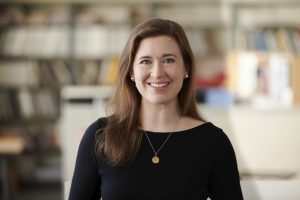 Sarah Brummett is a Designer and Architectural Historian with domestic and international experience in the field of historic preservation. Her work engages the dynamic relationships between historic architecture and landscapes, in addition to the challenges of security and accessibility in historic buildings operating in the twenty-first century. Her research experience explores themes of environmental and social justice, from the sustainable design principles of historic and vernacular architecture, to the complex interactions and economics of preservation and gentrification in urban environments.
Sarah Brummett is a Designer and Architectural Historian with domestic and international experience in the field of historic preservation. Her work engages the dynamic relationships between historic architecture and landscapes, in addition to the challenges of security and accessibility in historic buildings operating in the twenty-first century. Her research experience explores themes of environmental and social justice, from the sustainable design principles of historic and vernacular architecture, to the complex interactions and economics of preservation and gentrification in urban environments.
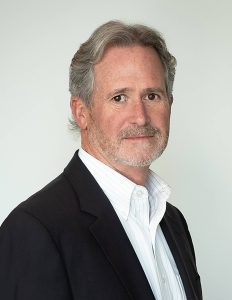 David Cocke founded Structural Focus in 2001 after 20 years at Degenkolb Engineers. He is a registered Structural Engineer in California, Arizona, Nevada and several other states, with expertise including structural design, seismic evaluation, historic preservation, and retrofit design. He has managed a variety of project types and sizes, including large and small historic landmark building strengthening and repairs, new laboratory buildings, repair and retrofit of commercial buildings, design of new studio production facilities, evaluations of large building inventories (industrial, high-tech and film studios), and numerous university and school renovations, additions, and strengthening. He is very active in the preservation of historic buildings and has made numerous presentations regarding the reuse of existing buildings as supporting sustainability principles. David is very active in leadership positions in several professional organizations, including preservation groups as well as national and international structural engineering and earthquake engineering associations.
David Cocke founded Structural Focus in 2001 after 20 years at Degenkolb Engineers. He is a registered Structural Engineer in California, Arizona, Nevada and several other states, with expertise including structural design, seismic evaluation, historic preservation, and retrofit design. He has managed a variety of project types and sizes, including large and small historic landmark building strengthening and repairs, new laboratory buildings, repair and retrofit of commercial buildings, design of new studio production facilities, evaluations of large building inventories (industrial, high-tech and film studios), and numerous university and school renovations, additions, and strengthening. He is very active in the preservation of historic buildings and has made numerous presentations regarding the reuse of existing buildings as supporting sustainability principles. David is very active in leadership positions in several professional organizations, including preservation groups as well as national and international structural engineering and earthquake engineering associations.
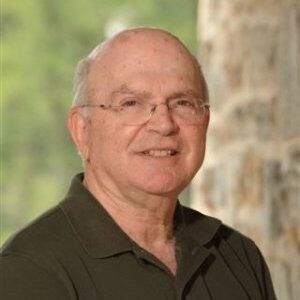 Mel Green, Structural Engineer, Melvyn Green and Associates. Melvyn Green and Associates, Inc. is a structural engineering and historic preservation firm that provides evaluation, design and research services to governmental agencies and private building owners. Services include seismic rehabilitation, building evaluation, structural engineering design and associated services. Our Mission Melvyn Green and Associates believes in the revitalization of the city and the preservation of our historic resources through conservation and reuse of the existing building stock; and through development of design methods and building regulatory processes that encourage the reuse of these resources while providing a safe building. Company Profile Melvyn Green and Associates was formed in 1972 by Melvyn Green, former Director of Building and Safety for the City of El Segundo, California. Mr. Green is the Past President of the Structural Engineers Association of California (SEAOC). He is the Past Chairman of the American Society of Civil Engineers Standards Committee on Seismic Rehabilitation of Buildings. He is active in a several historic preservation organizations and engineering societies.
Mel Green, Structural Engineer, Melvyn Green and Associates. Melvyn Green and Associates, Inc. is a structural engineering and historic preservation firm that provides evaluation, design and research services to governmental agencies and private building owners. Services include seismic rehabilitation, building evaluation, structural engineering design and associated services. Our Mission Melvyn Green and Associates believes in the revitalization of the city and the preservation of our historic resources through conservation and reuse of the existing building stock; and through development of design methods and building regulatory processes that encourage the reuse of these resources while providing a safe building. Company Profile Melvyn Green and Associates was formed in 1972 by Melvyn Green, former Director of Building and Safety for the City of El Segundo, California. Mr. Green is the Past President of the Structural Engineers Association of California (SEAOC). He is the Past Chairman of the American Society of Civil Engineers Standards Committee on Seismic Rehabilitation of Buildings. He is active in a several historic preservation organizations and engineering societies.
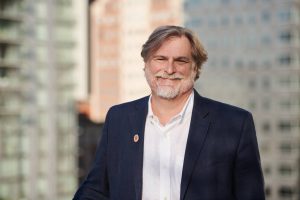 John D. Lesak, AIA, LEED AP, FAPT, founded and is Principal-in-Charge of Page & Turnbull’s Los Angeles office. With an interdisciplinary education in architecture, engineering, and materials science, John has focused his practice on the adaptive reuse, rehabilitation and repair of historic structures and cultural landmarks. He seeks out project solutions that utilize new and cutting-edge technology to seamlessly blend historic preservation with sustainability and resiliency. In addition to working on numerous award-winning projects, John teaches a course in sustainable preservation at USC’s School of Architecture, serves on the South Pasadena Historic Commission, and is a sought-after speaker on topics of incorporating sustainability, resiliency principles, and historic preservation tenets into a forward-thinking practice.
John D. Lesak, AIA, LEED AP, FAPT, founded and is Principal-in-Charge of Page & Turnbull’s Los Angeles office. With an interdisciplinary education in architecture, engineering, and materials science, John has focused his practice on the adaptive reuse, rehabilitation and repair of historic structures and cultural landmarks. He seeks out project solutions that utilize new and cutting-edge technology to seamlessly blend historic preservation with sustainability and resiliency. In addition to working on numerous award-winning projects, John teaches a course in sustainable preservation at USC’s School of Architecture, serves on the South Pasadena Historic Commission, and is a sought-after speaker on topics of incorporating sustainability, resiliency principles, and historic preservation tenets into a forward-thinking practice.
Workshop 4: Retrofit Projects (recorded)
Recording
Downloadable Resources
Information
Now that you're introduced to seismic risks and vulnerability of historic homes to seismicity, this workshop will focus on seismic retrofit of historic homes. Case studies that include various types of retrofits for single-family homes will be discussed, including retrofit of specific components of homes. Strategies for integrating seismic retrofits into overall home repair work will also be discussed. Lastly, resources and incentive programs for seismic retrofit of single-family homes will be discussed.
This workshop focuses on seismic retrofits and incentives. At the end of this session, you will be able to:
- Learn from examples of residential retrofit projects.
- How differing house types, styles, construction types, and parts of a house may require different seismic strategies.
- Explore strategies to maximize the benefits of individual projects, such as including structural and insulation upgrades when replacing a roof or integrating other improvements.
- Determine how much it may cost to retrofit your house.
- Identify incentive programs, like the California Earthquake Authority (CEA) Earthquake Brace + Bold Program, Mills Act, and when they are applicable.
- Typical seismic retrofit measures for historic homes and the parts of your home that are likely to require retrofit.
- Apply methods of protecting your home’s historic features while performing work.
Speakers
 Sarah Brummett is a Designer and Architectural Historian with domestic and international experience in the field of historic preservation. Her work engages the dynamic relationships between historic architecture and landscapes, in addition to the challenges of security and accessibility in historic buildings operating in the twenty-first century. Her research experience explores themes of environmental and social justice, from the sustainable design principles of historic and vernacular architecture, to the complex interactions and economics of preservation and gentrification in urban environments.
Sarah Brummett is a Designer and Architectural Historian with domestic and international experience in the field of historic preservation. Her work engages the dynamic relationships between historic architecture and landscapes, in addition to the challenges of security and accessibility in historic buildings operating in the twenty-first century. Her research experience explores themes of environmental and social justice, from the sustainable design principles of historic and vernacular architecture, to the complex interactions and economics of preservation and gentrification in urban environments.
 David Cocke founded Structural Focus in 2001 after 20 years at Degenkolb Engineers. He is a registered Structural Engineer in California, Arizona, Nevada and several other states, with expertise including structural design, seismic evaluation, historic preservation, and retrofit design. He has managed a variety of project types and sizes, including large and small historic landmark building strengthening and repairs, new laboratory buildings, repair and retrofit of commercial buildings, design of new studio production facilities, evaluations of large building inventories (industrial, high-tech and film studios), and numerous university and school renovations, additions, and strengthening. He is very active in the preservation of historic buildings and has made numerous presentations regarding the reuse of existing buildings as supporting sustainability principles. David is very active in leadership positions in several professional organizations, including preservation groups as well as national and international structural engineering and earthquake engineering associations.
David Cocke founded Structural Focus in 2001 after 20 years at Degenkolb Engineers. He is a registered Structural Engineer in California, Arizona, Nevada and several other states, with expertise including structural design, seismic evaluation, historic preservation, and retrofit design. He has managed a variety of project types and sizes, including large and small historic landmark building strengthening and repairs, new laboratory buildings, repair and retrofit of commercial buildings, design of new studio production facilities, evaluations of large building inventories (industrial, high-tech and film studios), and numerous university and school renovations, additions, and strengthening. He is very active in the preservation of historic buildings and has made numerous presentations regarding the reuse of existing buildings as supporting sustainability principles. David is very active in leadership positions in several professional organizations, including preservation groups as well as national and international structural engineering and earthquake engineering associations.
 Mel Green, Structural Engineer, Melvyn Green and Associates. Melvyn Green and Associates, Inc. is a structural engineering and historic preservation firm that provides evaluation, design and research services to governmental agencies and private building owners. Services include seismic rehabilitation, building evaluation, structural engineering design and associated services. Our Mission Melvyn Green and Associates believes in the revitalization of the city and the preservation of our historic resources through conservation and reuse of the existing building stock; and through development of design methods and building regulatory processes that encourage the reuse of these resources while providing a safe building. Company Profile Melvyn Green and Associates was formed in 1972 by Melvyn Green, former Director of Building and Safety for the City of El Segundo, California. Mr. Green is the Past President of the Structural Engineers Association of California (SEAOC). He is the Past Chairman of the American Society of Civil Engineers Standards Committee on Seismic Rehabilitation of Buildings. He is active in a several historic preservation organizations and engineering societies.
Mel Green, Structural Engineer, Melvyn Green and Associates. Melvyn Green and Associates, Inc. is a structural engineering and historic preservation firm that provides evaluation, design and research services to governmental agencies and private building owners. Services include seismic rehabilitation, building evaluation, structural engineering design and associated services. Our Mission Melvyn Green and Associates believes in the revitalization of the city and the preservation of our historic resources through conservation and reuse of the existing building stock; and through development of design methods and building regulatory processes that encourage the reuse of these resources while providing a safe building. Company Profile Melvyn Green and Associates was formed in 1972 by Melvyn Green, former Director of Building and Safety for the City of El Segundo, California. Mr. Green is the Past President of the Structural Engineers Association of California (SEAOC). He is the Past Chairman of the American Society of Civil Engineers Standards Committee on Seismic Rehabilitation of Buildings. He is active in a several historic preservation organizations and engineering societies.
 John D. Lesak, AIA, LEED AP, FAPT, founded and is Principal-in-Charge of Page & Turnbull’s Los Angeles office. With an interdisciplinary education in architecture, engineering, and materials science, John has focused his practice on the adaptive reuse, rehabilitation and repair of historic structures and cultural landmarks. He seeks out project solutions that utilize new and cutting-edge technology to seamlessly blend historic preservation with sustainability and resiliency. In addition to working on numerous award-winning projects, John teaches a course in sustainable preservation at USC’s School of Architecture, serves on the South Pasadena Historic Commission, and is a sought-after speaker on topics of incorporating sustainability, resiliency principles, and historic preservation tenets into a forward-thinking practice.
John D. Lesak, AIA, LEED AP, FAPT, founded and is Principal-in-Charge of Page & Turnbull’s Los Angeles office. With an interdisciplinary education in architecture, engineering, and materials science, John has focused his practice on the adaptive reuse, rehabilitation and repair of historic structures and cultural landmarks. He seeks out project solutions that utilize new and cutting-edge technology to seamlessly blend historic preservation with sustainability and resiliency. In addition to working on numerous award-winning projects, John teaches a course in sustainable preservation at USC’s School of Architecture, serves on the South Pasadena Historic Commission, and is a sought-after speaker on topics of incorporating sustainability, resiliency principles, and historic preservation tenets into a forward-thinking practice.
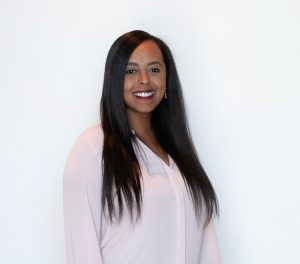 Maria Mohammed joined Structural Focus in 2013 after graduating from the University of Southern California with a B.S. in Civil Engineering in 2012 and an M.S. in Structural Engineering in 2013. Maria is a licensed Structural Engineer in California who has extensive experience working on the retrofit and renovation of historic structures and existing buildings, as well as the design of new buildings. She has worked on significant projects at Structural Focus, including Google LA HQ, the John Anson Ford Amphitheatre, CBRE Masonic Temple, and several projects on the Paramount Studios lot, among others.
Maria Mohammed joined Structural Focus in 2013 after graduating from the University of Southern California with a B.S. in Civil Engineering in 2012 and an M.S. in Structural Engineering in 2013. Maria is a licensed Structural Engineer in California who has extensive experience working on the retrofit and renovation of historic structures and existing buildings, as well as the design of new buildings. She has worked on significant projects at Structural Focus, including Google LA HQ, the John Anson Ford Amphitheatre, CBRE Masonic Temple, and several projects on the Paramount Studios lot, among others.
Workshop 5: Keep it Lookin’ Great (recorded)
Recording
Downloadable Resources
Information
Take pride in your historic home and keep it looking great. You will learn:
- Why historic home maintenance is critically important.
- How to differentiate between maintenance, repair, and replacement.
- Considerations in prioritizing, scheduling, and budgeting projects.
- The aspects of cyclical maintenance for roofs, windows, finishes and unique elements of historic homes.
Speakers
 Sarah Brummett is a Designer and Architectural Historian with domestic and international experience in the field of historic preservation. Her work engages the dynamic relationships between historic architecture and landscapes, in addition to the challenges of security and accessibility in historic buildings operating in the twenty-first century. Her research experience explores themes of environmental and social justice, from the sustainable design principles of historic and vernacular architecture, to the complex interactions and economics of preservation and gentrification in urban environments.
Sarah Brummett is a Designer and Architectural Historian with domestic and international experience in the field of historic preservation. Her work engages the dynamic relationships between historic architecture and landscapes, in addition to the challenges of security and accessibility in historic buildings operating in the twenty-first century. Her research experience explores themes of environmental and social justice, from the sustainable design principles of historic and vernacular architecture, to the complex interactions and economics of preservation and gentrification in urban environments.
 John D. Lesak, AIA, LEED AP, FAPT, founded and is Principal-in-Charge of Page & Turnbull’s Los Angeles office. With an interdisciplinary education in architecture, engineering, and materials science, John has focused his practice on the adaptive reuse, rehabilitation and repair of historic structures and cultural landmarks. He seeks out project solutions that utilize new and cutting-edge technology to seamlessly blend historic preservation with sustainability and resiliency. In addition to working on numerous award-winning projects, John teaches a course in sustainable preservation at USC’s School of Architecture, serves on the South Pasadena Historic Commission, and is a sought-after speaker on topics of incorporating sustainability, resiliency principles, and historic preservation tenets into a forward-thinking practice.
John D. Lesak, AIA, LEED AP, FAPT, founded and is Principal-in-Charge of Page & Turnbull’s Los Angeles office. With an interdisciplinary education in architecture, engineering, and materials science, John has focused his practice on the adaptive reuse, rehabilitation and repair of historic structures and cultural landmarks. He seeks out project solutions that utilize new and cutting-edge technology to seamlessly blend historic preservation with sustainability and resiliency. In addition to working on numerous award-winning projects, John teaches a course in sustainable preservation at USC’s School of Architecture, serves on the South Pasadena Historic Commission, and is a sought-after speaker on topics of incorporating sustainability, resiliency principles, and historic preservation tenets into a forward-thinking practice.
Workshop 6: The Nuts & Bolts of Retrofits (recorded)
Armed with knowledge about what makes your home historic, the basics of retrofits, and maintenance, you are ready to begin your retrofit project. In this session you will learn:
- How to apply the ‘lessons learned’ from case studies to your retrofit project
- How to navigate local permitting and approval processes, as not all municipalities are the same.
- How to select, budget for, and work with qualified architects, engineers, consultants, and contractors
Downloadable Resources
Speakers
 Sarah Brummett is a Designer and Architectural Historian with domestic and international experience in the field of historic preservation. Her work engages the dynamic relationships between historic architecture and landscapes, in addition to the challenges of security and accessibility in historic buildings operating in the twenty-first century. Her research experience explores themes of environmental and social justice, from the sustainable design principles of historic and vernacular architecture, to the complex interactions and economics of preservation and gentrification in urban environments.
Sarah Brummett is a Designer and Architectural Historian with domestic and international experience in the field of historic preservation. Her work engages the dynamic relationships between historic architecture and landscapes, in addition to the challenges of security and accessibility in historic buildings operating in the twenty-first century. Her research experience explores themes of environmental and social justice, from the sustainable design principles of historic and vernacular architecture, to the complex interactions and economics of preservation and gentrification in urban environments.
 Mel Green, Structural Engineer, Melvyn Green and Associates. Melvyn Green and Associates, Inc. is a structural engineering and historic preservation firm that provides evaluation, design and research services to governmental agencies and private building owners. Services include seismic rehabilitation, building evaluation, structural engineering design and associated services. Our Mission Melvyn Green and Associates believes in the revitalization of the city and the preservation of our historic resources through conservation and reuse of the existing building stock; and through development of design methods and building regulatory processes that encourage the reuse of these resources while providing a safe building. Company Profile Melvyn Green and Associates was formed in 1972 by Melvyn Green, former Director of Building and Safety for the City of El Segundo, California. Mr. Green is the Past President of the Structural Engineers Association of California (SEAOC). He is the Past Chairman of the American Society of Civil Engineers Standards Committee on Seismic Rehabilitation of Buildings. He is active in a several historic preservation organizations and engineering societies.
Mel Green, Structural Engineer, Melvyn Green and Associates. Melvyn Green and Associates, Inc. is a structural engineering and historic preservation firm that provides evaluation, design and research services to governmental agencies and private building owners. Services include seismic rehabilitation, building evaluation, structural engineering design and associated services. Our Mission Melvyn Green and Associates believes in the revitalization of the city and the preservation of our historic resources through conservation and reuse of the existing building stock; and through development of design methods and building regulatory processes that encourage the reuse of these resources while providing a safe building. Company Profile Melvyn Green and Associates was formed in 1972 by Melvyn Green, former Director of Building and Safety for the City of El Segundo, California. Mr. Green is the Past President of the Structural Engineers Association of California (SEAOC). He is the Past Chairman of the American Society of Civil Engineers Standards Committee on Seismic Rehabilitation of Buildings. He is active in a several historic preservation organizations and engineering societies.
 John D. Lesak, AIA, LEED AP, FAPT, founded and is Principal-in-Charge of Page & Turnbull’s Los Angeles office. With an interdisciplinary education in architecture, engineering, and materials science, John has focused his practice on the adaptive reuse, rehabilitation and repair of historic structures and cultural landmarks. He seeks out project solutions that utilize new and cutting-edge technology to seamlessly blend historic preservation with sustainability and resiliency. In addition to working on numerous award-winning projects, John teaches a course in sustainable preservation at USC’s School of Architecture, serves on the South Pasadena Historic Commission, and is a sought-after speaker on topics of incorporating sustainability, resiliency principles, and historic preservation tenets into a forward-thinking practice.
John D. Lesak, AIA, LEED AP, FAPT, founded and is Principal-in-Charge of Page & Turnbull’s Los Angeles office. With an interdisciplinary education in architecture, engineering, and materials science, John has focused his practice on the adaptive reuse, rehabilitation and repair of historic structures and cultural landmarks. He seeks out project solutions that utilize new and cutting-edge technology to seamlessly blend historic preservation with sustainability and resiliency. In addition to working on numerous award-winning projects, John teaches a course in sustainable preservation at USC’s School of Architecture, serves on the South Pasadena Historic Commission, and is a sought-after speaker on topics of incorporating sustainability, resiliency principles, and historic preservation tenets into a forward-thinking practice.

